Structure of the Central Government of the UK

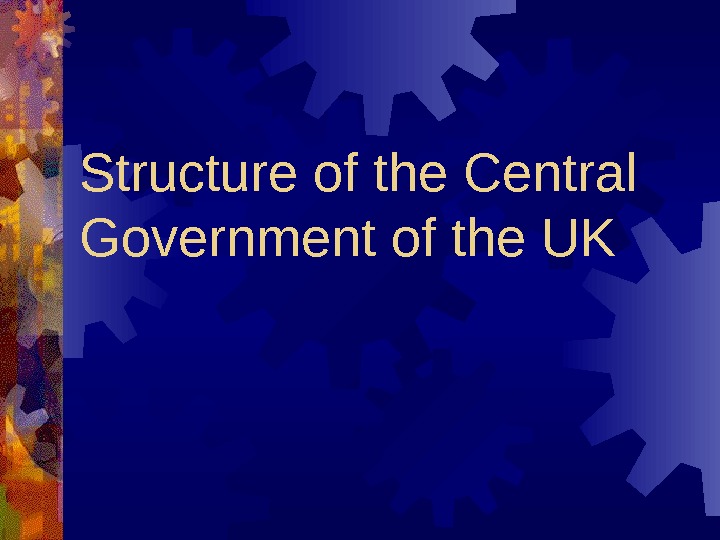
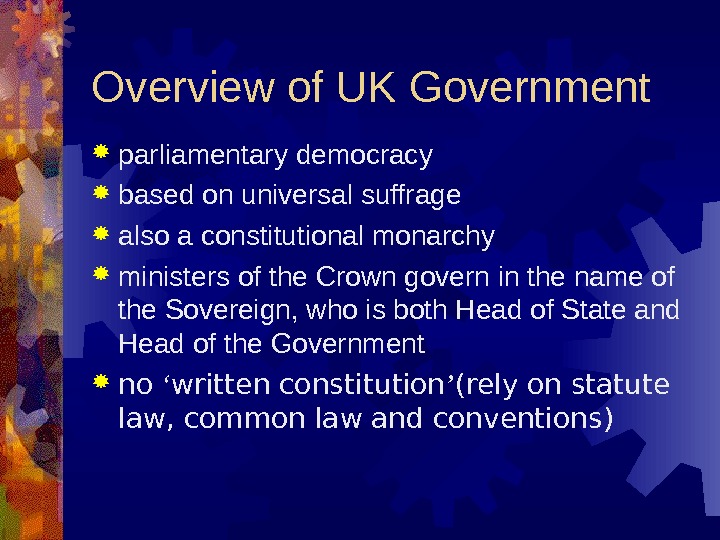
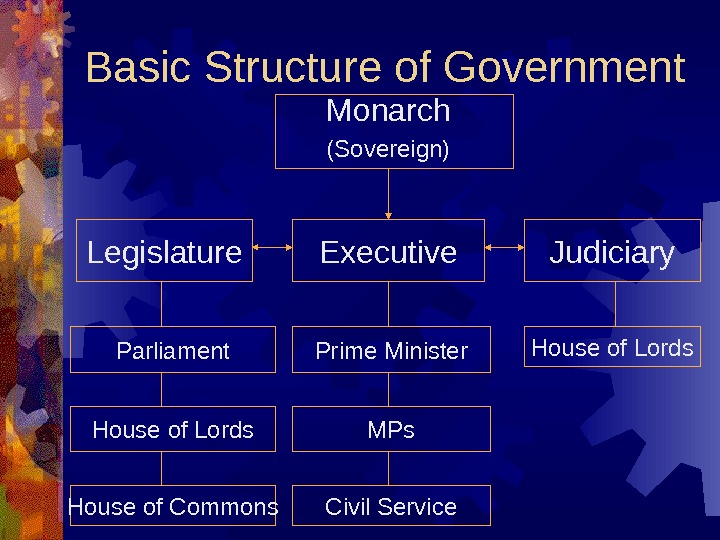
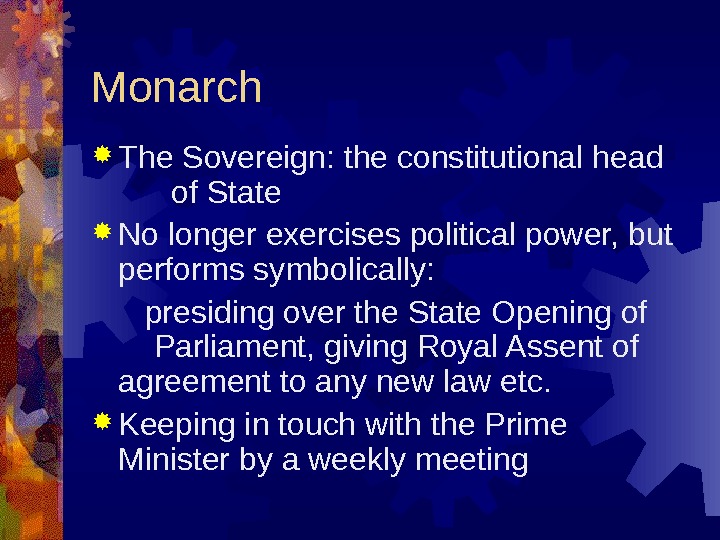
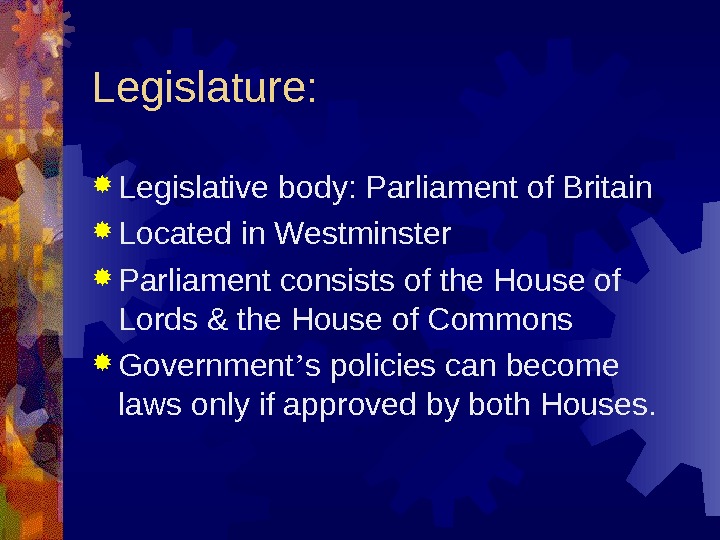
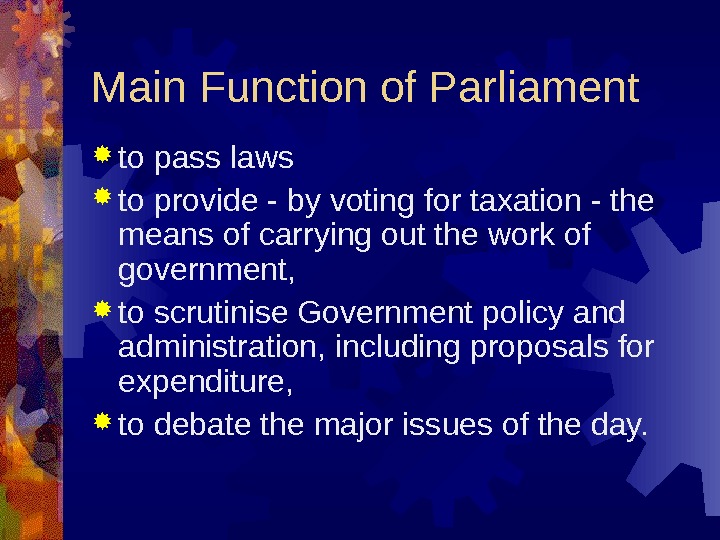
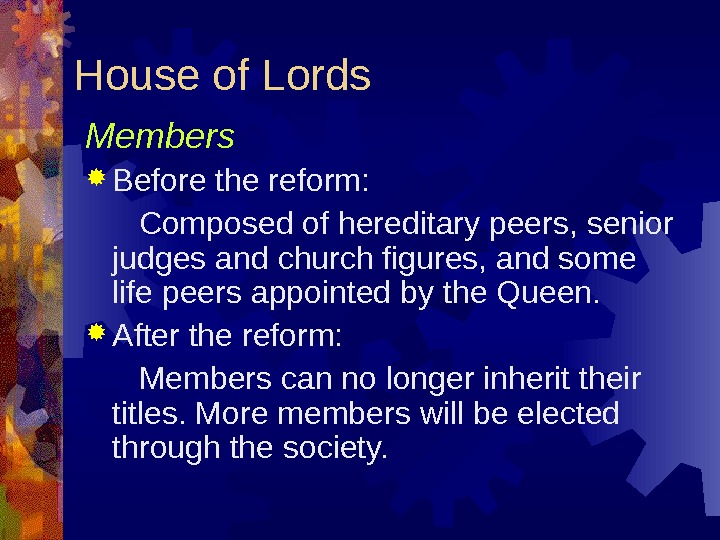
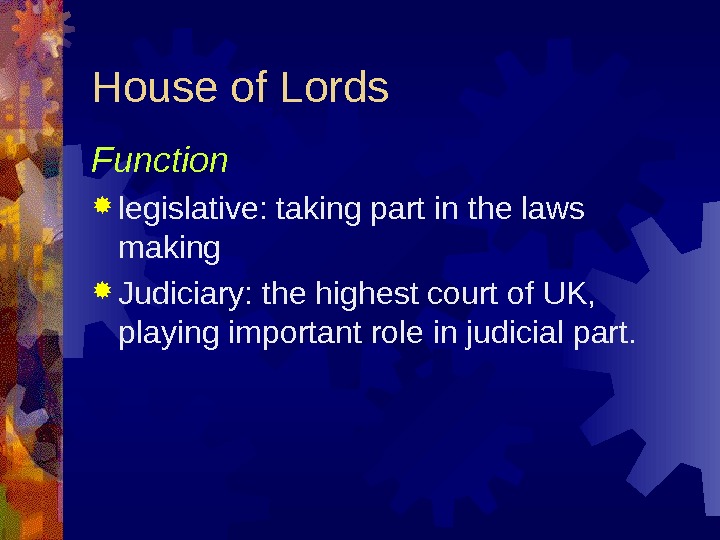
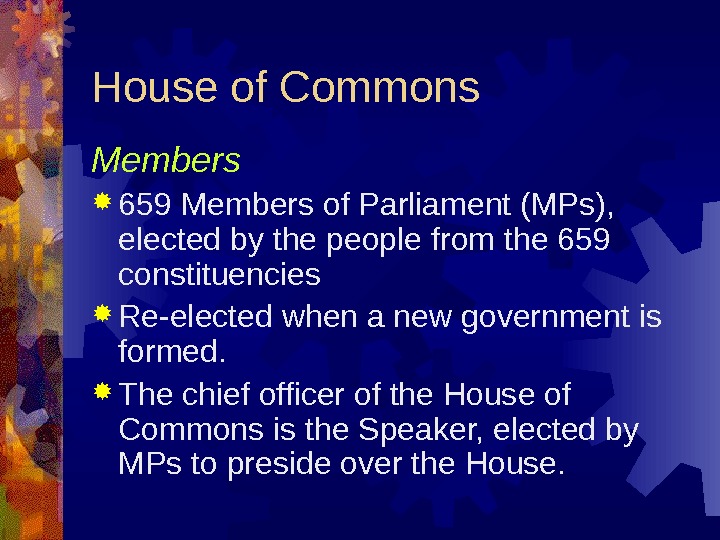
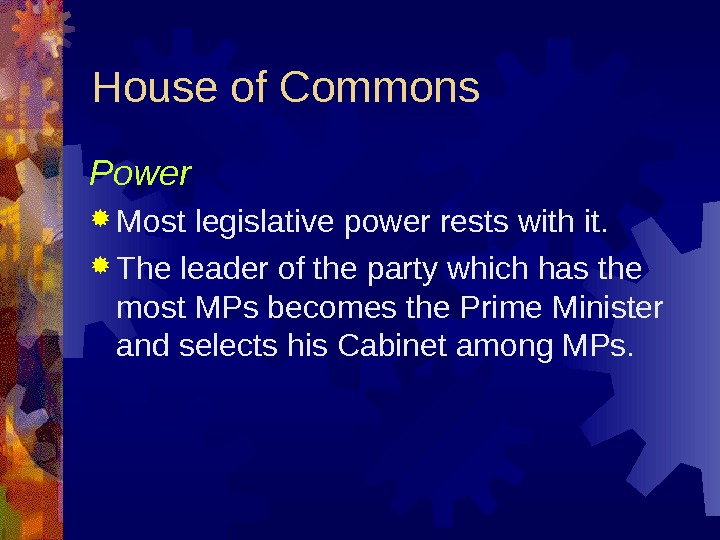
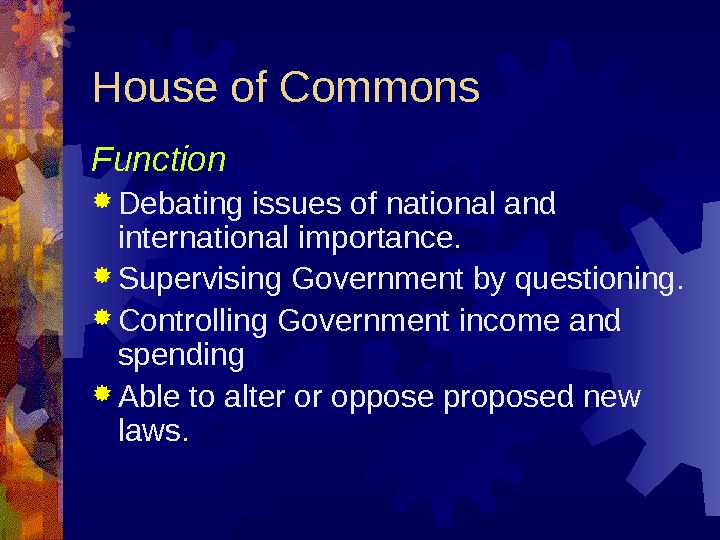
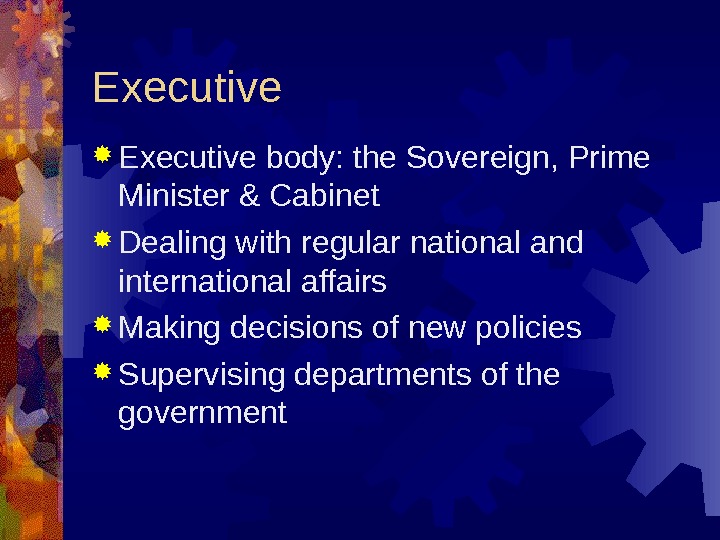
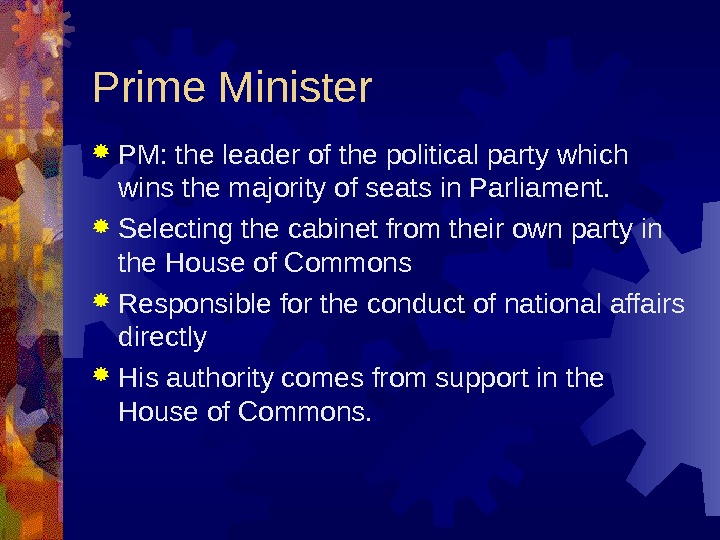
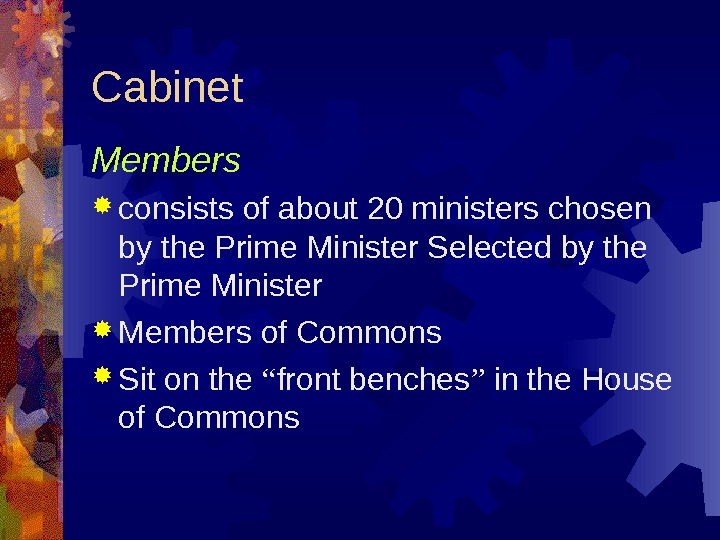
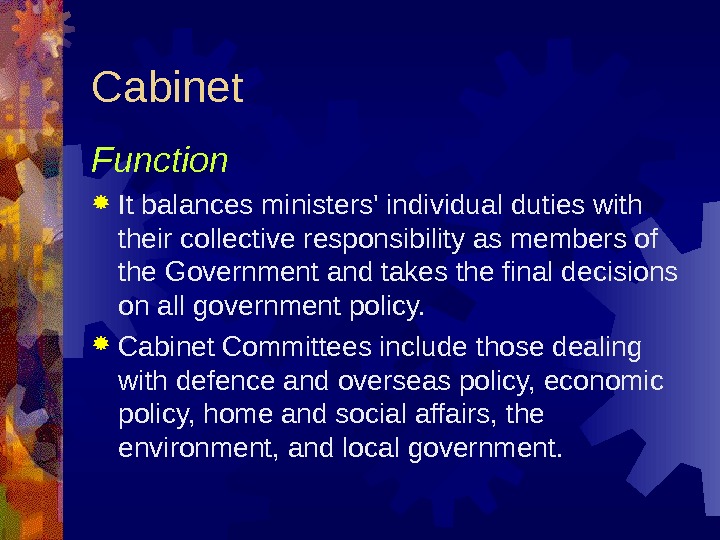
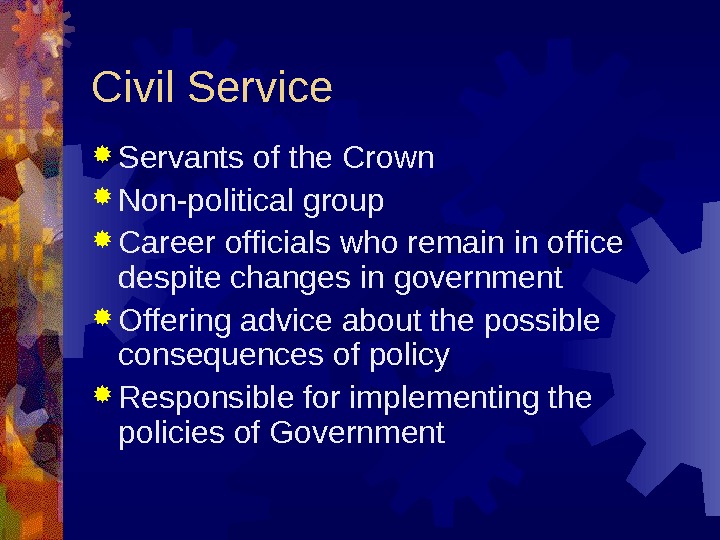
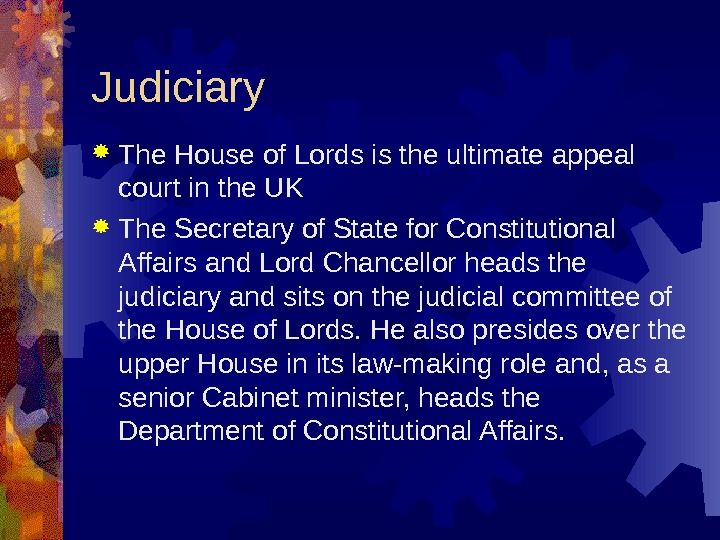
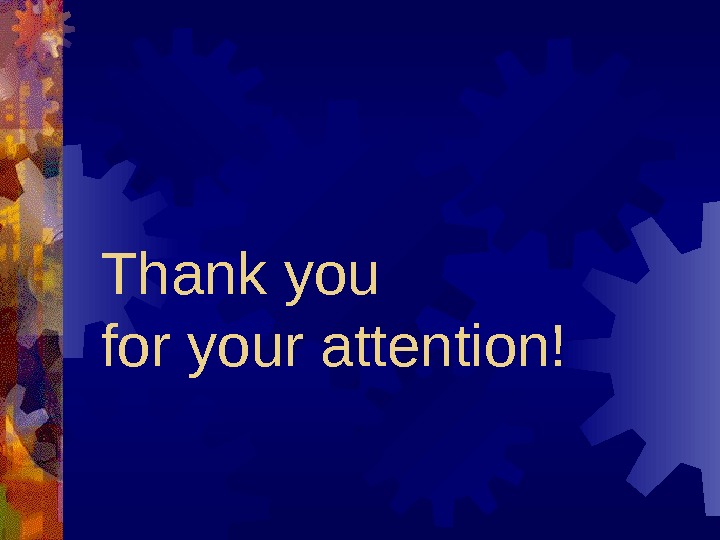
- Размер: 239.5 Кб
- Количество слайдов: 18
Описание презентации Structure of the Central Government of the UK по слайдам
 Structure of the Central Government of the UK
Structure of the Central Government of the UK
 Overview of UK Government parliamentary democracy based on universal suffrage also a constitutional monarchy ministers of the Crown govern in the name of the Sovereign, who is both Head of State and Head of the Government no ‘ written constitution ’ (rely on statute law, common law and conventions)
Overview of UK Government parliamentary democracy based on universal suffrage also a constitutional monarchy ministers of the Crown govern in the name of the Sovereign, who is both Head of State and Head of the Government no ‘ written constitution ’ (rely on statute law, common law and conventions)
 Basic Structure of Government Monarch (Sovereign) Legislature Judiciary Parliament House of Lords Executive Prime Minister MPs Civil Service House of Lords House of Commons
Basic Structure of Government Monarch (Sovereign) Legislature Judiciary Parliament House of Lords Executive Prime Minister MPs Civil Service House of Lords House of Commons
 Monarch The Sovereign: the constitutional head of State No longer exercises political power, but performs symbolically: presiding over the State Opening of Parliament, giving Royal Assent of agreement to any new law etc. Keeping in touch with the Prime Minister by a weekly meeting
Monarch The Sovereign: the constitutional head of State No longer exercises political power, but performs symbolically: presiding over the State Opening of Parliament, giving Royal Assent of agreement to any new law etc. Keeping in touch with the Prime Minister by a weekly meeting
 Legislature: Legislative body: Parliament of Britain Located in Westminster Parliament consists of the House of Lords & the House of Commons Government ’ s policies can become laws only if approved by both Houses.
Legislature: Legislative body: Parliament of Britain Located in Westminster Parliament consists of the House of Lords & the House of Commons Government ’ s policies can become laws only if approved by both Houses.
 Main Function of Parliament to pass laws to provide — by voting for taxation — the means of carrying out the work of government, to scrutinise Government policy and administration, including proposals for expenditure, to debate the major issues of the day.
Main Function of Parliament to pass laws to provide — by voting for taxation — the means of carrying out the work of government, to scrutinise Government policy and administration, including proposals for expenditure, to debate the major issues of the day.
 House of Lords Members Before the reform: Composed of hereditary peers, senior judges and church figures, and some life peers appointed by the Queen. After the reform: Members can no longer inherit their titles. More members will be elected through the society.
House of Lords Members Before the reform: Composed of hereditary peers, senior judges and church figures, and some life peers appointed by the Queen. After the reform: Members can no longer inherit their titles. More members will be elected through the society.
 House of Lords Function legislative: taking part in the laws making Judiciary: the highest court of UK, playing important role in judicial part.
House of Lords Function legislative: taking part in the laws making Judiciary: the highest court of UK, playing important role in judicial part.
 House of Commons Members 659 Members of Parliament (MPs), elected by the people from the 659 constituencies Re-elected when a new government is formed. The chief officer of the House of Commons is the Speaker, elected by MPs to preside over the House.
House of Commons Members 659 Members of Parliament (MPs), elected by the people from the 659 constituencies Re-elected when a new government is formed. The chief officer of the House of Commons is the Speaker, elected by MPs to preside over the House.
 House of Commons Power Most legislative power rests with it. The leader of the party which has the most MPs becomes the Prime Minister and selects his Cabinet among MPs.
House of Commons Power Most legislative power rests with it. The leader of the party which has the most MPs becomes the Prime Minister and selects his Cabinet among MPs.
 House of Commons Function Debating issues of national and international importance. Supervising Government by questioning. Controlling Government income and spending Able to alter or oppose proposed new laws.
House of Commons Function Debating issues of national and international importance. Supervising Government by questioning. Controlling Government income and spending Able to alter or oppose proposed new laws.
 Executive body: the Sovereign, Prime Minister & Cabinet Dealing with regular national and international affairs Making decisions of new policies Supervising departments of the government
Executive body: the Sovereign, Prime Minister & Cabinet Dealing with regular national and international affairs Making decisions of new policies Supervising departments of the government
 Prime Minister PM: the leader of the political party which wins the majority of seats in Parliament. Selecting the cabinet from their own party in the House of Commons Responsible for the conduct of national affairs directly His authority comes from support in the House of Commons.
Prime Minister PM: the leader of the political party which wins the majority of seats in Parliament. Selecting the cabinet from their own party in the House of Commons Responsible for the conduct of national affairs directly His authority comes from support in the House of Commons.
 Cabinet Members consists of about 20 ministers chosen by the Prime Minister Selected by the Prime Minister Members of Commons Sit on the “ front benches ” in the House of Commons
Cabinet Members consists of about 20 ministers chosen by the Prime Minister Selected by the Prime Minister Members of Commons Sit on the “ front benches ” in the House of Commons
 Cabinet Function It balances ministers’ individual duties with their collective responsibility as members of the Government and takes the final decisions on all government policy. Cabinet Committees include those dealing with defence and overseas policy, economic policy, home and social affairs, the environment, and local government.
Cabinet Function It balances ministers’ individual duties with their collective responsibility as members of the Government and takes the final decisions on all government policy. Cabinet Committees include those dealing with defence and overseas policy, economic policy, home and social affairs, the environment, and local government.
 Civil Service Servants of the Crown Non-political group Career officials who remain in office despite changes in government Offering advice about the possible consequences of policy Responsible for implementing the policies of Government
Civil Service Servants of the Crown Non-political group Career officials who remain in office despite changes in government Offering advice about the possible consequences of policy Responsible for implementing the policies of Government
 Judiciary The House of Lords is the ultimate appeal court in the UK The Secretary of State for Constitutional Affairs and Lord Chancellor heads the judiciary and sits on the judicial committee of the House of Lords. He also presides over the upper House in its law-making role and, as a senior Cabinet minister, heads the Department of Constitutional Affairs.
Judiciary The House of Lords is the ultimate appeal court in the UK The Secretary of State for Constitutional Affairs and Lord Chancellor heads the judiciary and sits on the judicial committee of the House of Lords. He also presides over the upper House in its law-making role and, as a senior Cabinet minister, heads the Department of Constitutional Affairs.
 Thank you for your attention!
Thank you for your attention!

